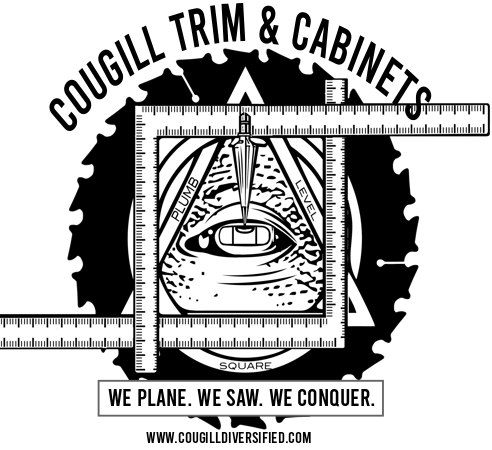New Baseboard in an Older House: A few things to consider
/When it’s time to upgrade the baseboard trim in your historic home, there are a few things that often come up that aren’t generally an issue in newer construction. Here are few things that I always like to check:
Plan for Plaster Damage.
While we always try our best to avoid damaging plaster walls, it’s somewhat inevitable in an older home that something will be damaged when baseboards are removed. There are things that can be done to minimize damage such as using a “trim puller” pry bar and using a wide board behind your pry bar to pull against, but some amount of spalling and cracking is inevitable so plan accordingly!
Have you floors been refinished? There will be a ridge.
If your floors have ever been sanded down with the base trim in place, there will be a ridge around the perimeter of the room where the baseboard sat. It may even extend under a shoe moulding if it wasn’t removed (it should always be removed prior to refinishing FYI). This may mean additional labor or make shoe moulding a requirement.
Your base trim is likely two pieces!
What looks like a single tall baseboard is often just a cap over a more generic base with a tapered top profile. What I often suggest to homeowners is if their base cap is custom, have that custom made and use a stock baseboard that’s “close” even if not an exact match. This doesn’t really draw the eye and saves a lot on knife grinding charges which are generally billed by the inch (around $50 an inch is standard).
Baseboard Outlets.
A lot of older homes have single gang outlets mounted sideways in the baseboards. Sometimes these have been upgraded to modern romex cable, but often I find original knob and tube or cloth-wrapped wire in these boxes. It’s wise to upgrade at this time, both your wire type and to a modern grounded receptacle. If you don’t have baseboard outlets, now would be a great time to add them! Avoid the expense of trenching through your plaster in the future.
Heat registers and return air.
If you have baseboard-mounted heat registers, now could be the time to upgrade them. You can often get by with a smaller register that will integrate better with your baseboard. If you want to add registers to your home, this is also the time to do it. Many old furnaces required substantially more return air than modern systems too, so you may be able to eliminate some return air vents or at least down-size them. If you have drop-in floor grates, you can have you carpenter build and install flush wooden floor registers that can be sanded and refinished along with you floors.
Planning to make any changes to your doors or door trim? Now is the time.
Baseboard runs into your door casing, so these should really be done first to avoid any re-work.
Reuse what you can!
Many old baseboards can be reused. Drive the nails out through the face of the board to save as much as you can. They may look a little rough with chipped paint and such, but you’d be surprised what a fresh coat of paint can do. Even badly cupped boards can be used if you keep cuts sequential, meaning if you cut outside miters from the same board, one beside the other, the cups will actually match up. Inside corners need to be coped anyhow, so a skilled carpenter can simply scribe the cup into the cope.
Anyhow, I hope this helps.
As always, we take pride in helping our community to maintain its cultural heritage.
Reach out with any questions and I’ll do my best to help.
—Nate Cougill, owner





